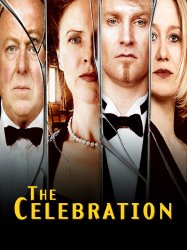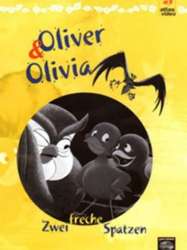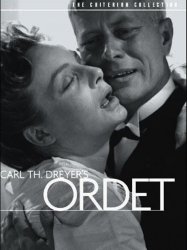Films from the country "danemark", sorted by revenue

Beyond (2000)
, 1h31Directed by Åke Sandgren
Origin Danemark
Genres Drama, Science fiction, Thriller, Adventure, Horror
Actors Otto Brandenburg, Jytte Abildstrøm, Bjørn Floberg, Bjarne Henriksen
Faisant de la plongée au large des côtes danoises en compagnie de leur grand-père, deux jeunes frères, Christian et Ask, découvrent une épave de sous-marin nazi perdue dans les profondeurs. Attiré par le bruit étrange, Christian entre…

The Celebration (1998)
, 1h45Directed by Thomas Vinterberg
Origin Danemark
Genres Drama
Themes Cooking films, Films about children, Films about families, Films about sexuality, Films about suicide, Rape in fiction, Films about pedophilia
Actors Ulrich Thomsen, Henning Moritzen, Thomas Bo Larsen, Paprika Steen, Trine Dyrholm, Klaus Bondam
Respected family patriarch and businessman Helge (Henning Moritzen) is celebrating his 60th birthday at the family-run hotel. Gathered together amongst many family and friends are his wife Else (Birthe Neumann), Christian (Ulrich Thomsen), his sullen eldest son, his well-traveled daughter Helene (Paprika Steen), and Michael (Thomas Bo Larsen), his boorish younger son. Christian's twin sister, Linda, recently committed suicide at the hotel.

Hugo the Movie Star (1996)
, 1h12Directed by Flemming Quist Møller, Jørgen Lerdam, Stefan Fjeldmark
Origin Danemark
Genres Musical theatre, Animation
Themes Films about animals, Film d'animation mettant en scène un animal
Actors Jesper Klein, Kaya Brüel, Flemming Quist Møller, Søs Egelind, Helle Ryslinge, Bronson Pinchot
L'histoire se déroule quelques heures ou quelques jours après les événements du premier film. Jack s'ennuie dans la jungle, Rita lui manque. Il commence à raconter aux autres animaux de la forêt ses aventures du premier film ainsi que ses expériences avec les humains. En ville, Rita ressent la même chose, Jack lui manque.

Hugo, the Jungle Creature (1993)
, 1h13Directed by Flemming Quist Møller, Stefan Fjeldmark
Origin Danemark
Genres Musical theatre, Animation
Themes Films about animals, Film d'animation mettant en scène un animal, Children's films
Actors Jesper Klein, Kaya Brüel, Bronson Pinchot, Axel Strøbye, Jytte Abildstrøm, Anne Marie Ottersen
Jungle Jack (ou Hugo dans la version originale) est un petit animal rare habitant dans la jungle. Il passe ses journées à s'amuser avec ses amis, les singes Zick et Zack. Au même moment, l'actrice Isabella Scorpion (ou Isabella Dehavalot dans la version originale), lassée par les animaux classiques qu'elle possède, charge son producteur Conrad Cupmann de capturer cet animal rare. Jack est alors attrapé mais il parvient à s'échapper avant de se faire emporter par une cascade. Il trouve refuge sur un bananier avant d'être embarqué dans un sac qui le mène sur un navire bananier où se trouvent Isabella et Cupmann.

War of the Birds (1990)
, 1h8Directed by Jannik Hastrup
Origin Danemark
Genres Animation
Themes Films about animals, Film d'animation mettant en scène un animal, Films about birds, Children's films
Actors Anne Marie Helger, Ove Sprogøe, Per Pallesen, Helle Ryslinge, Christophe Lemoine, Claire Guyot
In a forest lives a community of birds who live peacefully, including a pair of sparrows residing happily in a nest awaiting the hatching of their two eggs. A storm rolls in and a white dove warns the couple about Fagin, a sinister black vulture who kills every bird in his path. Fagin comes, and the male sparrow bravely attempts to protect his family by distracting the vulture and is pursued but is killed. The female shares her mate's fate, and the struggle caused the two eggs to fall out the nest with only one surviving and landing near a hole in the tree which is owned by Walter, an owl.
[...]See more...

Epidemic (1987)
, 1h46Directed by Lars von Trier
Origin Danemark
Genres Drama, Science fiction, Fantastic, Comedy-drama, Horror
Themes Medical-themed films, Films about viral outbreaks, Disaster films
Actors Lars von Trier, Udo Kier, Ole Ernst, Olaf Ussing
The film is divided into five days. On the first day the protagonists, screenwriters Lars and Niels lose the only copy of a film script (Kommisæren Og Luderen, "The Policeman and the Whore", a reference to The Element of Crime). They begin to write a new script about an epidemic: the outbreak of a plague-like disease. The protagonist is a doctor, Mesmer, who, against the will of the Faculty of Medicine of an unknown city, goes to the countryside to help people. During the next days, the facts of the script join the real-life events in which a similar disease starts to spread.
[...]See more...

Samson & Sally (1984)
, 1hDirected by Jannik Hastrup
Origin Danemark
Genres Animation
Themes Films about animals, Seafaring films, Transport films, Film d'animation mettant en scène un animal, Children's films
Actors Jesper Klein, Bodil Udsen, Poul Thomsen, Berthe Qvistgaard, Per Pallesen, Preben Neergaard
The film revolves around a young albino male Sperm whale named Samson who strongly believes the legendary tales of Moby Dick. The legends say that Moby Dick was a hero for all whales, and that he will someday return. He meets Sally, a young black-and-white female sperm whale who is orphaned after her pod is slaughtered by whalers. Samson's pod adopts Sally and she befriends Samson even though she does not believe in Moby Dick. Samson and Sally together survive certain dangers, such as killer whales, a massive oil slick, radiation poisoning, and whaling ships, which they refer to as "iron beasts.
[...]See more...

The Element of Crime (1984)
, 1h44Directed by Lars von Trier
Origin Danemark
Genres Drama, Science fiction, Thriller, Crime
Themes Films about sexuality, Erotic films, Films about prostitution, Serial killer films, Dystopian films
Actors Esmond Knight, Michael Elphick, Jerold Wells, Astrid Henning-Jensen, János Herskó, Stig Larsson
A detective named Fisher, who has become an expatriate living in Cairo, undergoes hypnosis in order to recall his last case. The postwar Germany of his dreamlike recollection is a dystopia, dark and decaying. Fisher remembers pursuing an elusive killer called the "Lotto Murderer", who was strangling and then mutilating young girls who were selling lottery tickets. He attempts to track down the killer using the controversial methods outlined in a book entitled The Element of Crime, written by his disgraced mentor, Osborne.
[...]See more...

Hunger (1966)
, 1h51Directed by Henning Carlsen
Origin Danemark
Genres Drama
Actors Per Oscarsson, Gunnel Lindblom, Birgitte Federspiel, Knud Rex, Hans W. Petersen, Henki Kolstad
In 1890 Kristiania (Oslo), an impoverished and lonely writer named Pontus (Per Oscarsson) comes to the city from the country. He stands on a bridge, overlooking running water, writing but clearly starving. He visits a pawnbroker several times. He sells his waistcoat for a few cents, then gives the money to a beggar. Other money that falls into his hands he also gives away. He has written an article that a newspaper editor (Henki Kolstad) agrees to publish if he makes some corrections, but Pontus is too proud to accept an advance when offered, so he leaves elated but still hungry.
[...]See more...

Reptilicus (1961)
, 1h21Directed by Poul Bang
Origin Danemark
Genres Science fiction, Horror
Themes Films about animals, Films about magic and magicians, Seafaring films, La préhistoire, Transport films, Animaux préhistoriques, Films about dragons, Giant monster films, Disaster films
Actors Carl Ottosen, Ann Smyrner, Kjeld Petersen, Mimi Heinrich, Asbjørn Andersen, Bent Meiding
Danish miners Svend Viltorft dig up a section of a giant reptile's tail from the frozen grounds in Lapland, where they are drilling. The section is flown to the Danish Aquarium in Copenhagen, where it is preserved in a cold room for scientific study. But due to careless mishandling, the room is left open and the section begins to thaw, only for scientists to find that it is starting to regenerate.

Ordet (1955)
, 2h4Directed by Carl Theodor Dreyer
Origin Danemark
Genres Drama
Themes Pregnancy films, Medical-themed films, Films about religion, Films about sexuality, Films about psychiatry
Actors Birgitte Federspiel, Henrik Malberg, Emil Hass Christensen, Preben Lerdorff Rye, Ejner Federspiel, Ove Rud
The film centers around the Borgen family in rural Denmark. The devout widower Morten, patriarch of the family, prominent member of the community, and patron of the local parish church, has three sons. Mikkel, the eldest, has no faith, but is happily married to the pious Inger, who is pregnant with their third child. Johannes, who went insane studying Søren Kierkegaard, believes himself to be Jesus Christ and wanders the farm condemning the age's lack of faith, including that of his family and the modern-minded new pastor of the village.
[...]See more...
 Connection
Connection